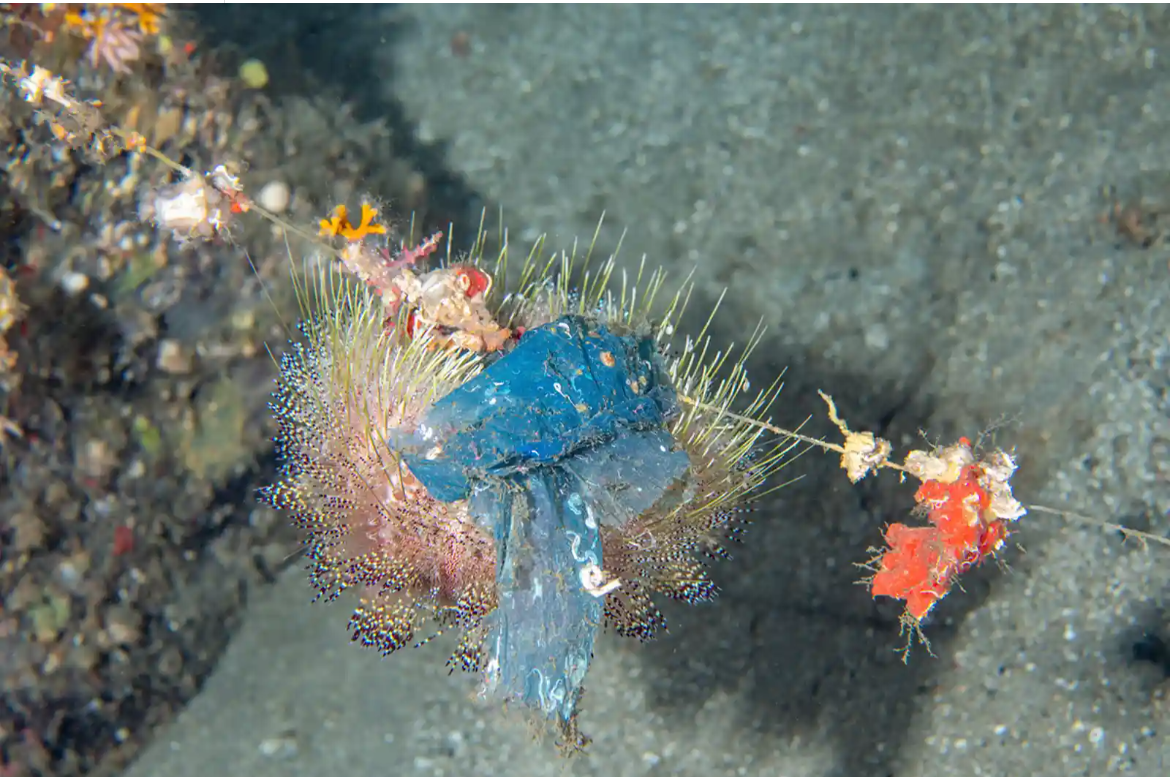Karen McVeigh
Volume of debris in the unexplored twilight zone is an ‘emerging threat’ to reefs already stressed by climate crisis, say scientists
Almost three-quarters of larger items found were from ghost fishing gear, with plastic wrappers and bottles also common. Photograph: Luiz Rocha/California Academy of Sciences
No part of the planet is free of plastic waste, and coral reefs are no exception, but scientists have now made the discovery that the deeper the reef, the more plastic debris it is likely to have.
A study published in Nature found that not only is every coral reef encumbered with plastic, but almost three-quarters of the larger items were from “ghost gear” – fishing paraphernalia such as ropes, lines and nets. Food wrappers and plastic bottles were also common. The plastic constitutes an “emerging threat” to reefs already stressed by the climate crisis and overfishing, the researchers said.
The study, Plastic Pollution on the World’s Coral Reefs, examined 85 reefs at more than two-dozen locations – including uninhabited atolls and reefs at depths of 150 metres – across the Indian, Pacific and Atlantic. It brought together scientists from the California Academy of Sciences; the foundation and charity Nekton; and the universities of São Paulo, Oxford and Exeter.
The scientists used special diving equipment to survey in “mesophotic”, or twilight, zones at 30-150 metres (100-490ft) beneath the surface, and discovered the deeper sites had more plastic than the shallower ones.
“It was surprising to find that debris increased with depth, since deeper reefs in general are farther from sources of plastic pollution,” said Luiz Rocha, the co-director of the Hope for Reefs initiative at the California Academy of Sciences.
“We are almost always the first humans to set eyes on these deeper reefs, and yet we see human-produced trash on every dive.”
There was more plastic pollution in reefs nearer to densely populated cities and markets, as well as marine protected areas, whose borders are heavily frequented by fishers.
The researchers noted that plastic can spread coral disease, and that fishing lines and nets can damage the structure of the reefs and thus harm fish abundance and diversity.
“Our findings reveal some of the complex collective challenges we face when dealing with plastic pollution,” said Hudson Pinheiro, the lead author, from the University of São Paulo and a research fellow at the academy. “As marine resources around the world dwindle, humans that rely on those resources are turning to deeper habitats and those closer to marine protected areas where fish remain abundant.”
Comoros, an island chain off the south-east coast of Africa, was the worst-affected location, with nearly 84,500 items of plastic in each square kilometre.
The least polluted was the Marshall Islands, with about 580 pieces a square kilometre.
One potential reason for finding more plastic at greater depths could be increased wave action and turbulence at the surface, which could drag debris deeper. Other possibilities include recreational divers removing trash from shallower reefs, and shallow corals – which have higher growth rates – growing over the debris.
The researcher stressed their findings highlights the need to expand the depth of marine protected areas to include mesophotic reefs, update international agreements on combating plastic pollution at source – such as those discussed at the recent Intergovernmental Negotiating Committee on Plastic Pollution – to include fishing gear, and to develop low-cost, low-impact biodegradable alternatives.


